In past ten years the use of mobile phones has increased tremendously, especially smartphones. This rise has in turn fueled the grow of mobile phone to heights that were at some point in time seemed impossible, take for example the internet who in the world would have ever thought that you could travel all over the entire world simply by touch your phone, amazing. The question on everybody mind is what will the future hold in store, but that is a topic for another day, for today you get to know change that have marked mobile phone technology for the last ten years
In 2005 Nokia N92 made Mobile TV possible
This was actually done in South Korea. It was possible when the Koreans made headway driven by improvements in the quality of screens. The clarity of the screens made the pictures more visible and thus watchable on the small mobile screens. This was followed by the launch of satellite and terrestrial mobile TV services
In 2006 Samsung B600 the first 10 megapixel camera for mobile phones was invented.
The Samsung made the first 10 MP cameras, unlike the previous years where producer could only make phones that would produce very low resolution pictures. Possibly the emblematic resolution that puts the mobile phone camera at the same level with digital camera was the 10 MP.
In 2006 Ben Q Siemens S88 the First ever mobile phone with an OLED Display
Abbreviated as AMOLED was a very important stepping stone in mobile phone display because it gave the user the ease of watching and viewing both video and still images on mobile phones. Apart from that it also used less battery power. Later on Samsung through the Samsung S8500 introduce the first phones to use screens with super AMOLED display, it had 0.001mm of layer for touch sensor and which by coincidence enriched the display.
May 2007 LG Prada First mobile with a capacitive touchscreen
The LG Prada touchscreen phone was as result of LG hard work and effort. The launch at that time was one of a kind and which marked the birth of the touch screen phone era. The LG Prada had four icons all found at the bottom, which were used to make and receive phone call, send messages and go to the main menu. They were also other bottoms found at the side, they was used to control the volume and the camera.
In 2007 Apple i-Phone starting the smartphone and mobile data revolution
The use Internet on phone was at first a huge flop. But the ideal later kicked in when apple jump in, although apple cannot as the sole creator of internet on mobile phone it sure did play a big role, driven by massive grow in internet used over the year pushed this ambition even more further
In 2007 Samsung SCH-B710 First 3 Dimension mobile phone Camera
A coherent result of a 3 Dimension screen was the invention of 3 dimension camera for mobile phones; this was 5 years after the creation of the first 3 dimension mobile phone screen. The camera had 1.3 megapixels that came along with a dual lens and 2.2 inch screen for the Samsung SCH-B710.
In 2007 the unveiling of apple iPhone OS
IOS was created and developed by Apple Inc. was specifically meant for Apple hardware. It officially was launched in 2007 and would later on power all of apple’s devices including tablets and pads.
In 2008 T-Mobile G1 Smartphone and the introduction of the Android Operating System
November 2007 saw the formation of the open handset alliance by thirty-four companies that pledged to introduce tech that would be used worldwide. Rival firms come together in support of Google android development project …all fueled by the announcement and release of the tremendously successful Apple iPhone 2G in June 2007.
After apple’s release the Android operating system moved rapidly from incubation to the market. In June 2008 T-Mobile declared the G1 and which was followed by the installation of the android 1.0 on mobile phones.
In 2010 Symbian
Symbian OS was officially unveiled in 2010 as the replacement of UIQ and OS6 that were first used for Nokia handsets. A year later in 2011 a replacement was created for the Symbian OS the Symbian Anna was introduced followed closely by Nokia Belle in August the same year.
In 2010 the first mobile phone with an in built projector was introduced, the Samsung Beam I8520
The projector has been built on a high end smartphone and gives off WVGA image quality. In case you are wondering what WVGA is, this is a wider screen version with a higher resolution. It does not produce the best quality video or pictures but truth be told is really innovative. That being said they is still more room for improvement perhaps in the near future Samsung or some other firm will come up will a upgraded type.
In 2012 41MP camera to advance camera phone the Nokia 808 Pure view
Nokia has really done it this time round, with the introduction of the Nokia 808. The 808 is definitely Nokia’s effort to distinguish itself in an otherwise full smartphone market. The reviews about this mobile phone were crazy.
The World’s first mobile with built in radiation monitor the Sharp Pantone 5 107SH
Can you recall the Fukushima Nuclear Power Plant tragedy? Radiation was released into the atmosphere and the citizen became very frustrated by the government since it could not provide accurate information about the hazard that existed. Then the need for a device that would measure radiation arose this in turn gave birth to the sharp pantone smart phone that could actually measure radiation. The smartphone can display the measurements at the touch of a button.
In 2014 the Amazon Fire Taking Image Recognition Software to its next level
The Amazon Fire is filled with many innovations but only one that stands out from the rest, the use of image recognition technology. But what is a leap forward is integrating an excellence camera, one touch button, picture recognition processing done back in the Cloud with a data base of 33 million books, videos, music tracks and magazines for sale.
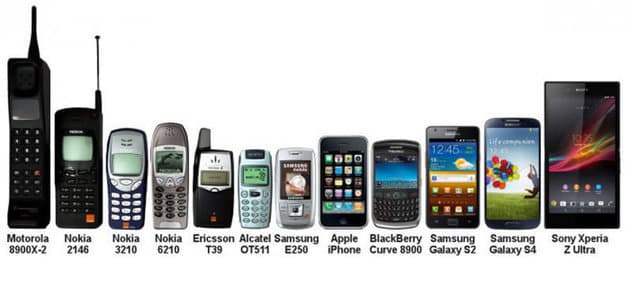

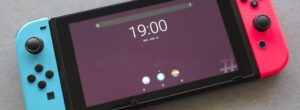
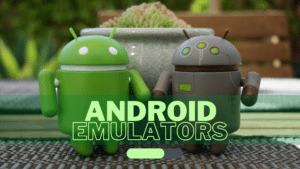

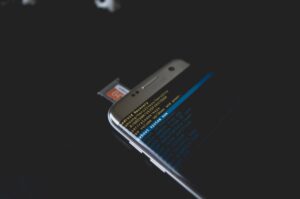
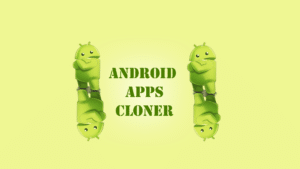
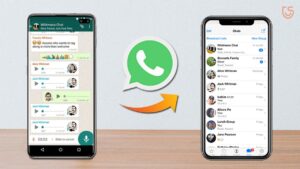
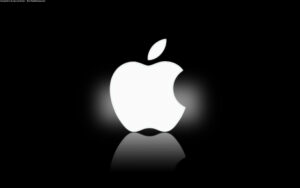
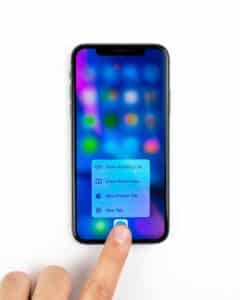
need a help, help me software to break code of nokia 2690.
Thank you
You forgot,
1996 – NOKIA release the Communicator 9000
This was the first phone with applications, some were pre-installed and others could be purchased and installed. The phone was initially big – and Nokia changed that in subsequent releases of the phone. The pre-installed applications were text processing, spreadsheet, email, internet browser and (music) composer. Typical first paid applications were more advanced spreadsheets, presentation / MS Powerpoint clone. With the 9500 around 2001, the communicator was back big as a brick, but with WiFi. A new variant, the 9300 followed that was reduced to pocket size, and the E90 that came around 2004 had it all.
With these phones you could write a letter on the phone, and “fax” it to the office fax machine to get it printed.
Apple argued that they were first, but they were late. They argue that Nokia did not provide an “App Store” . and correct, it was called “Omnia” and the application developers were few. But regardless, this is the first phone with a browser on a decent screen. It also had a full keyboard – with rubber keys. It had battery capacity as other mobiles, so when other worked on laptops with 3 hours batteries, the Nokia kept on through the longest flights. The only problem was that the US did not have a GSM network in those days where a mobile phone could be used – they had “Cell phones” that worked in town, but just a few worked in other towns. But then AT&T rolled out GSM and the same phone could be used everywhere, also abroad, and Apple saw the moment and seized it with AT&T´s blessing. I travelled to Mexico to be able to use my “Communicator”, it worked fine in South America – and the rest of the world, but not in the USA – it lacked the 2.1GHz “tri-band frequency” that in the rest of the world is used for DECT handsets (cordless phones).
the content is showing last 10 years 🙂 i appreciate your knowladge
That model, and subsequent roll-out of variants make every claim of “first” you make erroneous. I gave you a shaky ground to claim your figures: “First in the USA” because the devices were sold and used in Canada. Americans have a way of changing events that I dislike.
Symbian
Symbian is an old operating system based on the Psion OS developed by Sir Clive Sinclair for his micro-computer, and their follow-up of with “Personal assistant” – “PDA”. This was under very liberal licensing, and Nokia joined the consortium with Ericsson and Samsung. The development license was free, allowing developers to make games, such as “Angry Birds” but the handset makers had to pay an entry fee, and a fee per handset produced – believe around $30 000. That would have made them a “partner” in the consortium, and the more you paid the cheaper was the following per unit fee. The other partners slept, while most of the development was done by Nokia, so at some stage they elected to take the full control of the Symbian consortium – all the shares. They then split the code in two: S60 and S80 – both POSIX compliant – like Linux, but with the standard screen. The S80 had the capability to show multiple screen, and used for the high-end devices, the “Communicator”.
In 2010, Nokia took full control of The Symbian Consortium, terminated development of the S80, and focused on the simpler S60 that is what most relate to a “Symbian”.
Symbian is an OS for a mobile phone, and things like address book / Contacts, Appointments, Call-log, SMS with T9 predictive texting is bundled. The S80 was supposed to be replaced by the Linux variants: Maemo for N900 and MeeGo for N9 – code that now is alive and well with Jolla, “Sailfish” – who works closely with the Samsung Tizen development team. Sailfish can emulate Android, beside all what has been made for Maemo and MeeGo. Tizen / Sailfish is Linux KDE, Tizen use OpenPlasma, Sailfish own “Mer”, Qt based UI. Qt is available on Symbian S60.
Thank yall for the info☺?????????????????????????????????????????????????????????✌✋?☝?????